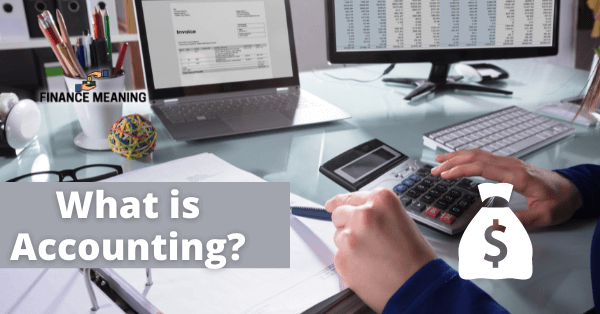Do you want to make the best investments? Are you afraid of the wrong decisions? You will learn to invest well through opportunity cost. Opportunity cost is the comparison of best and economic choice. You compare the investment options in economics and finance. It is possible with the opportunity cost formula.
It is not a complex formula. Opportunity cost shows the outcome of one investment over another. The opportunity cost helps you to make the right decision. Deciding between the best investments leads to confusion. We will help you understand the opportunity cost formula. Scroll down for more information.
How to Calculate Opportunity Cost Formula?
What is Opportunity Cost?
Implicit Opportunity Cost
Implicit cost is the cost that occurs in the company. You do not show implicit cost as a different expenditure. It speaks as an opportunity cost. It occurs when a company uses internal resources in the projects.
The company does not pay for the usage of resources. The company divides the resources. It gives up on the ability to earn revenue from outside resources. The implicit cost comes from the asset usage rather than buying or renting.
A company includes implicit costs as a business cost. It represents the potential income sources. The economists include regular and implicit costs in the business. They consider these costs while calculating economic profits. Economic profit is the company’s revenue. You generate it by subtracting the business and opportunity cost.
Explicit Opportunity Cost
Economic profit takes explicit and implicit costs into account. You can calculate the economic profit of the company. It is total earnings minus explicit costs. You refer to implicit costs in the company as opportunity costs.
You can use opportunity costs to compare various options. The options are essential for the company’s resources. You will understand better in the example below:
A company has $20,000 in its deposit account. It keeps the money in the account and earns 10% annual interest. It is $2,000. The company can use other options rather than deposits.
It can invest the money in an advertisement for products. The first alternative is the implicit opportunity cost. If a company leaves money in the back, it will earn the interest of $2000. The interest is the implicit opportunity cost.
Advertisement expenditure is the explicit cost. Opportunity cost is the value of the excellent opportunity. The company executives need to make the right choice.
Recommended Read | S Corp vs C Corp: Which One Is Best for Partnership and Business
Steps to Calculate Opportunity Cost
How to calculate opportunity cost formula for business decisions? You calculate the opportunity cost by comparing the incomes. It has two options. It is possible to decide by estimating future profits. There is another option. You can calculate opportunity cost if you know. Compare the returns after the decision.
The following formula shows calculating opportunity cost formula:
Example:
- Your company has the chance to use a particular amount of funds. You have two options. You can either reinvest in business or stock market investment. It is an assumption.
- Your return on the stock market is 18% over the next year. You invest in a company asset rather than a stock investment. You will earn a 12% return on investment over the next year.
- The opportunity cost of the situation is 6%. You will let go of the chance of earning 6% if you reinvest in the assets.
Opportunity Cost of Capital Formula
You do the calculation of it by comparing. You compare them with the investment returns on both projects. Please check the calculation for the rate of investment (ROI).
Marginal Opportunity Cost Formula
You multiply the interest rate of return. Receive it on the capital. You have your interest at 5%. You gave up on the chance to earn $25,000 on $100,000 over the next year.
Recommended Read | Selling Books on Amazon: A Complete Guide [2021]
When to Use Opportunity Cost Calculations
You can use the opportunity in any decision made by the business. The usage of opportunity cost calculations helps business.
It allows the business people to know the profitable decisions. They will know the return on the given-up option. It would help if you considered using it in making the decisions. It will show an effect on business profits.
Opportunity cost is the portrayal of the uses. It is the benefit that individuals or business misses out. It is essential when choosing one option over another. The economic cost is the other name for the business. Opportunity cost is essential for the companies.
It allows them to know the best way to use limited funds and resources. The companies see opportunity cost of a particular option. They can know which option will provide the returns. Opportunity cost is easy to understand. It will help you know the potential benefits and risks of a decision.
Example of Calculating Opportunity Cost
Please read the following example of business opportunity cost.
A company has its building where the employees work. The company owner has told the executives to move. He tells the company to offer the building for rent. The company will miss earning $4000 rent a month if it stays.
The company would pay $3000 rent a month for relocation. The company will give up $1000 income a month. It is possible if they stay at their building. $1000 at the opportunity cost.
It would help if you considered something in the example. It is the implicit cost. The company may earn an extra $1000 a month by renting its building. It may miss out on things as an outcome.
Example: Many employees will not travel in the new location. The company management may ask them to quit the job. This situation will increase the hiring cost. The company is at a loss. The company needs to pay the taxes in the new location.
It will affect the total earnings. It is vital to understand that not all opportunity cost has profits. Take this example into attention while calculating business costs.
Limitations of Opportunity Cost
Difficult to Estimate Future Returns
You calculate the business cost of the company during profits. There can be a lack of knowledge in opportunity cost. You will see profits in all options. The company can select only one. All options cannot generate profits. The directors decide to select one for investment. They realize the outcome later. It isn’t easy to estimate the returns to the future.
Not Exactly Accurate
There are two options available for opportunity cost. Every option has returns on investment. It would help if you made a wise choice to select the best one. Each alternative has factors. You may fail to consider some factors while calculating.
The opportunity cost is not accurate.
The opportunity cost is not accounted for by the company. It does not have financial benefits. The company should study the project results for forgone opportunities. It is not to demotivate but to learn to choose the best opportunity.
Difficult to quantify opportunity cost
The opportunity cost is essential to make decisions. It is not easy to quantify while you consider the factors. There are two investment opportunities. One investment requires a tie-up with cash for two years. The other investment will not allow you to touch the money for ten years. It will give you higher returns with more risk. There is a liquidity difference in the opportunity cost.
Opportunity cost takes more time to calculate. You can make decisions as per the information by opportunity cost. Many times, managers have no time to compare the options. The consumer goes to the grocery store with a list. He does not have time to compare the price and quality options. There are fast buying decisions. They notice the outcome later.
FAQs: Using the Opportunity Cost Formula
How do you calculate the opportunity cost per unit?
Opportunity cost = return on selected option – return for not selected option.
Example: Imagine that you decide to buy stocks in GFK and MRF companies. You choose GFK for investment. Over the year, GFK has earned you 5% returns. MRF has 10% returns. You can measure the opportunity cost as 5% (10%-5%).
How is opportunity cost calculated from PPC?
- The opportunity cost for Product A= Product B production ÷ product A Production
- The opportunity cost for Product A= Time to produce 1 unit of product A ÷ Time to produce 1 unit of product B
Why is opportunity cost a ratio?
You express opportunity cost as a marginal unit change at first. Later, you calculate the ratio. The change is an outcome of increasing opportunity costs. It is related to shifting the resources from industry.
Example: Meat to vegetables. The reallocation of skills in factors of production are costly.
What is opportunity cost explain with numerical example?
Opportunity cost is the cost of options that must be forgone. It is necessary to pursue certain actions. The company’s return is only $6. They could have earned a 12% return from a fixed deposit. The opportunity cost is (12%-6% = 6%).
Conclusion: Opportunity Cost Formula
It would help if you decided on the business. There are two options. It tells the effect of decisions that you have taken. The opportunity cost formula is essential to make wise decisions. It helps to improve the decision-making skills in the business.
A business owner needs to recognize the factors in the options. Not all options can give returns. I hope you understood the basics of opportunity cost. If any questions, let us know in the comments section.




